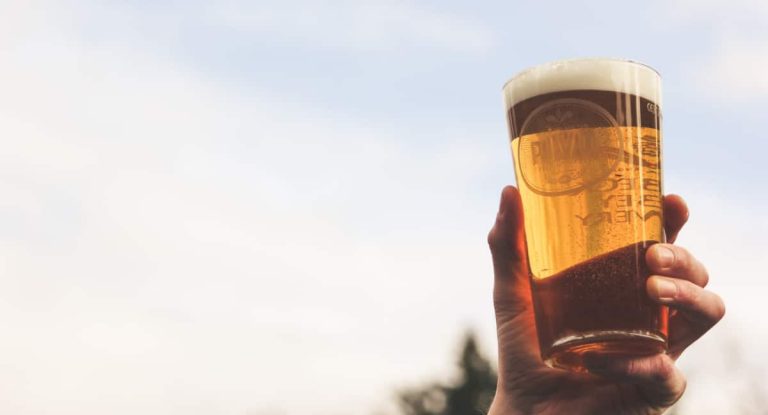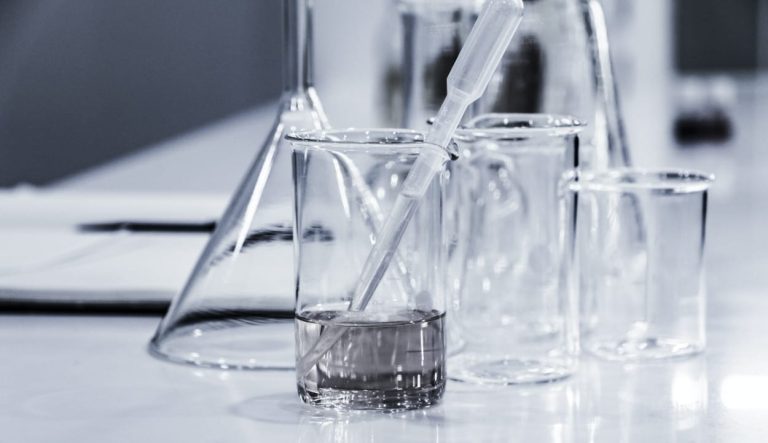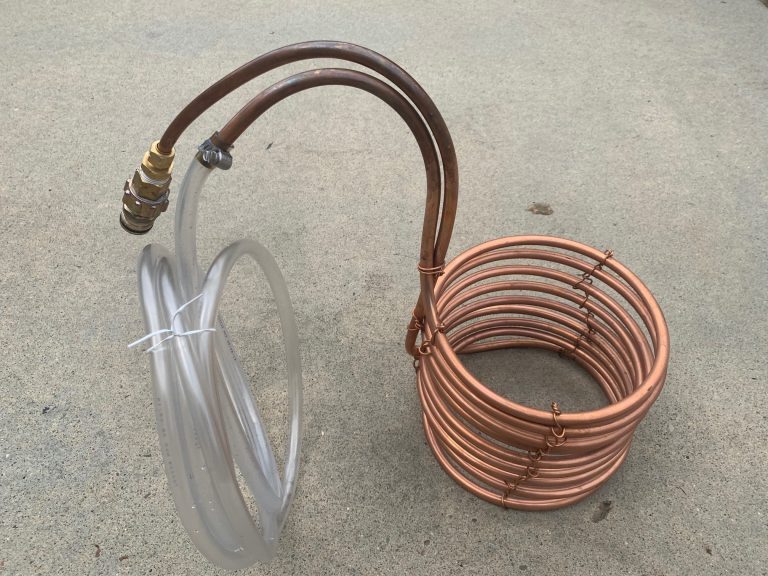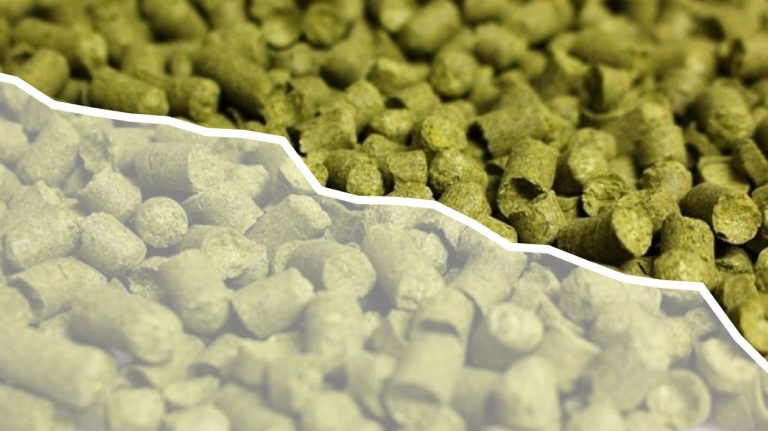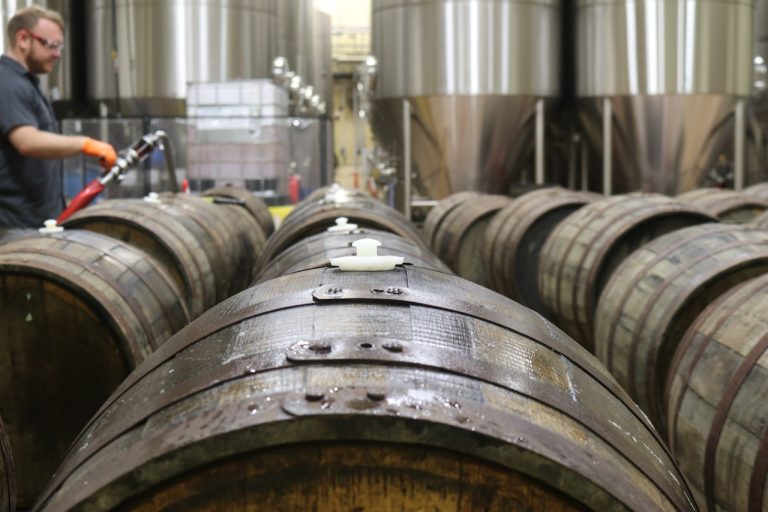Controlling Diacetyl in Beer
When yeast ferments beer, it produces over 500 different compounds. Many of these compounds give beer its characteristic flavor and aroma. However, one of these compounds that is almost always considered undesirable is diacetyl.
Diacetyl was a problem for me early on in my homebrewing process. I got bit by the homebrewing bug and bought my first homebrew kit from Northern Brewer that also had the Fresh Squished IPA extract recipe with it.
I followed the directions word-for-word, and the smells coming out of the airlock were spectacular. I left it in my 65° F basement for three and a half weeks and decided it was time to bottle.
Fast-forward 1 week, I cracked my first bottle and WHAM – the buttered popcorn/butterscotch-like taste hit me hard. I had no idea what that off-taste was and assumed it just needed more time to condition in the bottle. Unfortunately after 4 months in the bottle it was still there and the whole batch was a dumper.
I was devastated.
I knew I followed the directions verbatim and made sure everything that came in touch with the cooled wort was sanitized.
But I hadn’t. The kit told me to dump the cold wort into my carboy and top it off with “cold water until you reach 5 gallons”. Well, I did that… with cold well water… that wasn’t pre-boiled.
So lesson learned, but only after trying a second extract kit and having the same problem. The only good thing to come out of it was that I learned everything I could about this horrible buttery off flavor called diacetyl.
Diacetyl Creation
Every beer will have some amount of diacetyl present, since it is a natural byproduct of yeast eating the sugar inside your wort. Home brewed beer usually has levels from 0.05 to greater than 1 ppm, but at those small amounts, most humans cannot taste it.
Factors that influence the diacetyl level in beer are fermentation temperature, aeration level, bacterial contamination, and the yeast strain. Diacetyl levels vary during the course of fermentation and maturation, and eventually decline to imperceptible levels once fermentation is complete. These levels drop due to the fact that yeast also eat acetolactate, which is a precursor to diacetyl.
Likely Causes of Your Diacetyl
The two most common reasons diacetyl shows up in a finished beer is due to an infection or unhealthy yeast. Let’s dig into each of those a little more.
Infections
As was the case with my doomed batch of beer, an infection caused the increased levels of diacetyl. This is because the bacteria from the infection product this compound at much higher rates than yeast can manage to fix on its own.
Unhealthy Yeast
Yeast can be unhealthy for a number of reasons: old age, insufficient nutrients, or poor temperature control.
If there is not enough yeast nutrients in the wort, the yeast will produce its own, called valine. However, the more valine yeast produce, the more acetolactate intermediate is required, hence the more diacetyl made. All yeast strains produce diacetyl like this, but at different levels. The best way to combat this is to dose your wort with the appropriate amount of yeast nutrient.
Fermenting at higher temperatures will also stress the yeast and cause them to product more diacetyl than they otherwise normally would. For example, Omega’s DIPA yeast has an optimal temperature range of 65˚F – 72˚F. If your fermentation vessel’s internal temperature creeps past that top mark of 72˚F, the yeast will begin to stress and eventually produce off flavors, one of which will be diacetyl.
Temperature control can be a tricky thing to master. Some dedicated homebrewers have built fermentation freezers or purchase expensive glycol chillers to keep their wort at an optimal temperature range to prevent any of these off flavors from manifesting. A cheaper option is to create a swamp cooler which involves the carboy covered in a towel or t-shirt sitting in a rubbermaid container full of water. A fan then is blown on the wet t-shirt, thus cooling the fermenter.
I am lucky enough to have a basement that is a constant 65˚F, so I just have to sit it down there in a dark corner and even with a vigorous fermentation the internal temperature never increases to a dangerous level.
Fixing Diacetyl Taste in Beer
Unfortunately, there isn’t a lot you can do apart from wait and hope the diacetyl levels decrease. If the diacetyl levels are low enough, the residual yeast will scrub the compound from the beer and eventually remove the flavor. This can happen inside the fermenter itself or inside a bottle as the beer conditions.
If you detect the buttery flavor in your beer while it is still fermenting, it may be a good time to consider a diacetyl rest. While this is usually needed for cooler fermentation such as a lager, it can be done on any beer. The process is simply to raise the fermentation temperature to the top range of the yeast for a two-day period near the end of the fermentation. For example, if the yeast has an optimal temperature range of 65-72˚F, raise the temp of your vessel to 72˚F. Usually, the diacetyl rest should be started when the beer is 2 to 5 specific gravity points away from the target terminal gravity.
If the diacetyl flavor was caused by an infection, there is no amount of rest or waiting that will fix it.

